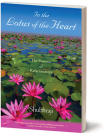Hari Om !
Om Sri Chinmaya Satgurave Namah
Happy Navaratri Friends.

According to the lunar calendar, October 16 to 23rd this year is the celebration of the nine nights of the Goddess.
While the Upanishads and Brahma Sutras deal with Nirguna Brahman, Impersonal God or the Formless Reality, the Bhagavad Gita contains some reference to Personal God or Saguna Brahman – the concept of Goddess worship dates to a much later period in India’s spiritual history and developed over time to its present day form.
Although the Hindus believe that there is One God – different deities: male, female or the aniconic forms like those of the shiv linga or saligram( representing Lord Shiva and Vishnu respectively), are used as symbols to connect with the One Absolute Reality.
In the vedas we find hymns dedicated to the goddess of dawn or Ushas. Several other hymns are found to other vedic goddesses like Aditi, Vak, Prithivi, and they all represent Shakti or the divine feminine principle. Later, as the Hindu religion evolved, Durga, Lakshmi and Saraswati became the most popular and worshipped trinity. There are hundreds of representations of goddesses, like Bhoo devi, or mother earth, many forms of Parvati, like Kali etc.
Navaratri is a popular Hindu festval celebrated all over India with slight variations. It is divided into three segments, each devoted to a different aspect of the supreme goddess. The first three days are devoted to Sri Durga invoking her to destroy all our negativity. The next three days are devoted to Lakshmi the goddess of inner and outer wealth, and the final three days are devoted to Saraswati, the goddess of knowledge and of the arts and music.
There are three main aspects of the Supreme reality – as the Creator we refer to him as Brahma (not to be confused with Brahman –the Impersonal God). His consort is Saraswati. To create we need knowledge. As the sustainer we call him Vishnu and his consort is Lakshmi. To maintain our creation we need wealth. As the creative destroyer we refer to him as Shiva, who is paired with Parvati – who appears in different legends in numerous incarnations as Kali, Sati, Uma etc. Shakuntala Jagganthan in her book ‘Hinduism- an Introduction’’ writes, “Different iconographical features are depicted for the different deities at different times, depending on the roles they perform.”
The tenth day is called Vijayadashami or Dussehra. It is believed to be the day Goddess Durga defeated the demon Mahisasura. It is is also the day Lord Ram defeated the demon king Ravan.
The idea is that we take time to connect in a celebration to these aspects within us. Navaratri is a call for the seeker to turn within or become aware of the inner purity to be cultivated to apprehend the ego – the so-called demon on the tenth day – the day of victory! Today it has became merely a festival where the rich spiritual symbolism is largely forgotten. Yet, it is a joyful time for Hindus to come together in prayer, dance, chant and music to awaken and honor the divine feminine power that we need now more than ever in the world to bring it into balance.
(you may email comments to: info@namahom.org)
“A deep, wise, and wonderful exploration of the Vedanta path for relationships both with yourself and with others. Shubhraji provides everything you need to create healthy, fulfilling relationships…”
Order Now